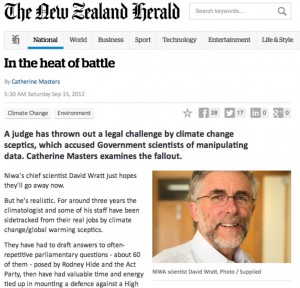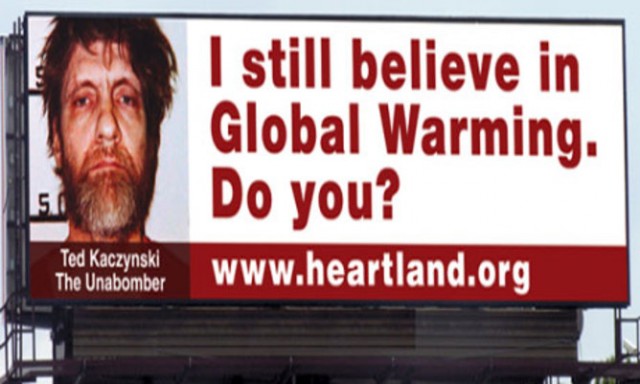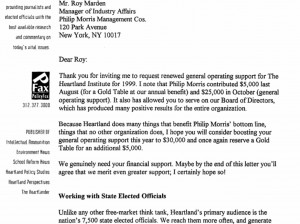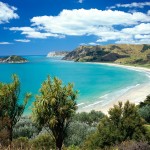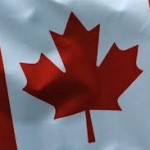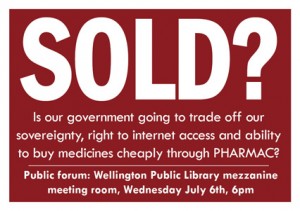Several people today, on the two-year anniversary, have published retrospectives about the Christchurch earthquake of February 2011 and what happened to them then.
I’ve decided to resurrect something I wrote not long after the quake and to republish it here today in honor of the two-year anniversary and to add a bit of a postscript to it describing some of what’s happened since then.
Hope you enjoy it. Be warned, it’s a long read.
++++++++++++++++++
After an intense eight days, I managed to reconnect to the Internet and get my computer running. As many of you are aware, we had a major 6.3 earthquake here in Christchurch, New Zealand, at mid-day on Tuesday, February 22nd. The epicenter was six miles/10K southeast of the city center and 3 miles/5k deep. That’s’ very close and very shallow and it was, to say the least, a major event for all the 300,000 people who live here.
We expect the death toll to approach 240. Compared to some recent events like Haiti, that doesn’t sound like much. But the difference is, of course, building codes crafted for safety and followed when building.
But, even so, we had two large buildings pancake entirely and the tallest building in town; a 26 story hotel, is leaning badly and will have to be destroyed. In the Central Business District , 30% or more of the buildings have been destroyed or will have to be taken down. The entire center of the city, called the Four Avenues area (several square miles), is entirely off-limits and cordoned off by military and police. 55,000 people are off work because of the cordon. At this time, they are still digging bodies out of the rubble.
I was lucky to have taken the day of the earthquake off and I was riding my motorcycle when it happened. The ground shook so badly, that I thought I had a flat tire and stopped – but it kept shaking. When it finally stopped, I rode onto my apartment building to see what had happened and everyone was outside.
There didn’t seem to be much damage at first glance but closer inspection revealed several disquieting things. There were large and widespread liquefaction pools in the park across the street. A walk down below into the parking garage revealed water gushing up from the base of the support columns and that the concrete garage floor was serious bowed up from pressure beneath. Upstairs, at the base of the building I lived in, there was serious damage to the supporting concrete and its internal rebar was exposed. Everyone was standing out in the parking lot talking and waiting for the aftershocks.
I concluded that the buildings were very likely fatally damaged and I went upstairs to gather what I could. Two bags of a minimal set of clothes, my passport, checkbooks, coat, bathroom items and a few other essentials. While I was doing this, my friend, Colette, had walked from her work at the courthouse a quarter mile away to see how I was. But I was upstairs and missed her. I came down with my bags and texted her and she text-replied that she was now walking to her house in Hoon Hay; about an hour’s walk away. I spent some time talking with folks in the parking lot of my complex and then I went down and retrieved my second motorcycle from the parking garage below and brought it up. It had been thrown to the floor by the force of the quake and the handle bars were bent but still drivable. Water was beginning to fill up the garages, below.
I took off then to drive to Colette’s house to see what sort of shape it was in. That was one amazing ride. Destruction was on all sides. Water and sand and silt filled many of the roads from liquefaction. Cars and anxious people were grid locked everywhere in their efforts to get home to their loved ones. My motorcycle made it easier to weave in and out of traffic but it was also very dangerous as people were very distracted. At one point, I fell in behind an ambulance with its siren on which was slowly clearing a way through and I just followed in its wake. It took me 45 minutes to make the 15 minute ride and Colette and I arrived at her place at just about the same moment.
Her battery powered radio said that the quake had measured as 6.3; Apparently a lighter event than the September 4th event at 7.1. But, this one was a lot closer and shallow. The water and power were off there but her place seemed to have suffered no obvious damage. Her son, Jonathan, arrived after a long and harrowing drive up from Ferrymead and, while we were all talking about the event, a major aftershock hit. It was big enough that I stood under a doorway and wondered if her house would stand it. The ceiling light over her dining room tore loose and smashed down onto the glass-topped dining room table.
I left then by foot to walk back to my apartment complex to try recover my 2nd motorcycle and to begin to pull more stuff out of my apartment. I strongly suspected that if the building was fatally damaged, as I suspected, then the authorities would be by before long to red-sticker it and then all access further would be blocked; perhaps forever until it was demolished. But, given that the disaster was city wide and serious, I estimated that I had some hours and maybe even days before such restrictions were put in place.
Colette and I agreed that when I got there and had a brought down a load of stuff from my apartment and had it ready for transport, I’d text her and she’d drive over and we’d load it up in her car to take to her place. There was no point in her trying to come over immediately in her car, however, as the city’s streets were still in utter chaos.
It took me an hour and ten minutes to walk back. It was an amazing walk for the entire distance. Some areas had sustained no damage and there were others where entire rows of shop fronts were just tumbled down. Sirens, cars, anxious people, water and silt everywhere. By the time I passed Hagley Park near my place, a helicopter landing area had been set up out in the open space for emergency transport. I also walked by the hospital and I could see a lot of folks sitting out on the grassy areas around it. I assumed that some of the wards had been evacuated.
Back at my apartment complex, many people were still standing about in the parking lot. A few were actively bringing things down from their units but many were just standing around drinking beer and thinking that the damage was not that bad and that we’d all just go back upstairs in a bit and it would be over.
My unit is in the B Block on level 5. New Zealanders call the ground floor 0 whereas in the US, we call the ground floor 1. So in Kiwi terms, I was on the fifth floor but in the US, we’d say I was on the 6th. Not an inconsequential distinction since I was now about to start climbing up and down the six flights of emergency stairs over and over again. The elevators were off as well as all sources of power and water. The only thing that seemed to be functioning were high-pitched alarm warnings that were repeatedly squealing on every floor and within every unit – as if we hadn’t noticed there was a problem.
This began several hours of intense packing and carrying. I’m sure I made over 20 trips up and down. And, there was a lot of triage style decision making as I went along. I took the most important things first and then tried to work my way down. After two hours, I sent a text to Colette asking her to come over now to load up if she could. And then I pressed on. I never heard from her so I texted again in 15 minutes. And then repeatedly after that ever trip down; and still got no reply.
At that point, the phone systems and cellular systems were massively overloaded in the city and very little was getting through. Sometimes partial messages came through four and five times in a row. I tried calling her land line and the system told me it didn’t recognize the number; which was an amazing response. I kept carrying and soon I had quite a lot of stuff gathered up in the parking lot in piles next to my 2nd motorcycle.
Finally, I called her land line one more time and it went through and she answered. She’d been texting me as well but with no response. She agreed to head over and I continued to carry things down. I was pretty sure that I probably had two car loads down in the parking by now (she’s got a small hatchback).
After 30 minutes, I began to watch for her as I continued to carry. I went up and down many times and my legs were seriously aching. After an hour and a half, she still hadn’t arrived and I was getting worried about what had happened to her. And, it was verging onto rain and all my stuff was sitting exposed in the parking lot. Computers, clothes, and cardboard boxes full of my life.
Finally, she arrive on foot. Without proof that she was a resident in the area, she’d been unable to get her car through the police cordons which had closed off the center of the city so she’d finally had to park a very long distance away and walk in.
We got on my 2nd motorcycle and rode back to her car, and then left the motorcycle there and brought the car back in (I had a driver’s license proving I lived there).
Now, it was raining in earnest and I was deeply worried about my things. There was no worries about looting though as I knew many of my neighbors who were milling about in the complex’s parking lot. We loaded up everything that we could in her car and stashed the rest under a partial overhang for rain protection and took off for her place. Each trip through the city was an amazing and different experience. The city was like a bee hive that had been kicked. At this point, we had no idea of how bad the destruction had been over more into the business core.
At Colette’s place, we unloaded my stuff into her garage. In her house, there was still no water or power. So, after a few minutes, I suggested we might as well go back and pick up the rest of my stuff since there wasn’t much we could do at her house in the dark and cold.
On each trip, we encountered roadblocks and at each roadblock, what was allowed and not allowed changed according to who you were talking to at that moment. On one trip in the pouring rain we couldn’t go east on Harper Avenue because the bridge over the Avon was damaged and we’d fall in. So we had to take a complex detour around into Papanui. But, an hour and a half later when we returned, the traffic was flowing both ways on Harper. I’m not saying this by way of complaint – it’s just that the level of confusion and misinformation throughout the city was very intense and everyone was trying to do their best in the midst of a huge city-wide disaster.
We returned to the complex and most of the people in the parking lot had cleared away due to the rain. Some, like my friend Raj and his partner, were still trying to decide if they should try to sleep there that night without water and power or not. The aftershocks were still coming fairly regularly and some were quite big. With no water or power in the rain, the buildings were just large dark hulking masses.
We loaded my remaining stuff and took off again for yet one more cross city drive. When we returned to Colette’s we found the power had come back on which was unexpected and lovely. We could make now tea to warm ourselves and have something to eat. The water, however, was still off.
That night, we tried to sleep but we didn’t sleep much. Every 20 minutes or so, there’d be another aftershock. The violence of some of them was strong and as I lay there, I wondered how strong they’d get and if I’d have to seek shelter on the floor beside the bed. You could hear some of them coming from a distance like a low train rumble and others hit you suddenly like a slap under the house. Some were deep or distant and rumbled far away while others were shallow. You could feel the earth settling and resettling on a scale that was, and is, very hard to imagine. It make one feel very small indeed.
Colette’s talked about having survivor’s guilt over the fact that while so many lost had their homes, she’d come through unscathed. The emotions for everyone run high in something like this.
Death, acts of quiet heroism, anguish, fear and grief mixed with human compassion and caring gathered around all of us in all proportions amid the many scenes of destruction.
Watching how a ‘civil’ society responds to something like this is also an education. Yes, there were looters and con-artists out immediately but they were the tiny minority.
The real picture there in Christchurch in those terrible days was that it wasn’t every man for himself but more that everyone was looking out for each other when they could. The emergency folks were out immediately and worked for days without rest even while they had no idea of the state of their own homes and little knowledge of their loved ones. it was ‘Civil’ in that folks obeyed directions and pulled over to let the ambulances through. The search and rescue folks from the US and Japan and other countries who came in the days following the quake said that they had never encountered better civil disaster coordination organization. People worked incessantly to get the water and power back on as soon as humanly possible. Centers were set up and manned immediately for the homeless. The Mayor said over the radio, “Check on your neighbors and help them” and it wasn’t a cliché.
The next morning after the big quake, on Wednesday, we went back over to my apartment again and Colette came upstairs with me and we began to pack up more stuff for transport. Everything in my kitchen cabinets had been tossed out onto the hard floor and sugar was mixed with pills and glass shards as well as tools and silverware. It was a huge mess. My bookcases had also dumped their contents all the way across the room.
She gathered up everything salvageable from the kitchen and from the drawers of my desk while I packed various other things. Again, we made multiple trips up and and then, in the mid-afternoon, it became obvious that the authorities had arrived and were about to restrict entry to the buildings.
On my next to last trip I was told by a police officer that I couldn’t enter the building again. But Colette has talked to another officer at about the same time and had determined that what the law actually said was that until the building had been officially assigned a red ‘no-go’ sticker, that the authorities present could only ‘advise’ you not to enter rather than prevent you.
This was an important distinction for me because I’d just realized just minutes earlier that I’d failed, in all my previous trips, to get a box that was critical. It contained a lifetime of slides and all my family photographs that had been passed down to me from previous generations. I talked to another police officer to make sure of my facts and then I went back to the gate where the officers weren’t letting folks in anymore.
I explained what was still up there and that I needed to, I had to, go up one more time. And I explained that I was aware of what the law was in this case. The policeman tried to bluff me but I told him that if he was going to stop me, then he was going to have to arrest me. I was nice, not confrontive, but firm. Finally he relented but said I had to be in and out as quickly as I could; and I agreed. And thus, my family photos were saved as well.
At Colette’s, when we’d returned with the last of the stuff, the water had come back albiet with very low pressure – but it was on, so that was nice. We could have showers. The tap water however, if consumed, had to be boiled according to the authorities. Pipes were broken, sewage was running loose, and there was too much danger of cross over.
Thursday dawned and we’d slept better; maybe we were getting used to the aftershocks.
After some rearranging of things (my stuff was scattered everywhere), we went on a motorcycle ride to see what had become of the city and to revisit my apartment complex; even though we couldn’t get in. We found that physical security there was loose and we could still walk into the complex’s parking lot as well as into the parking lot of The George Hotel next door.
A half dozen folks were still in the complex gathered at the two small isolated apartments near the front car gate. They were drinking beers and having a barbeque. They said they were ‘guarding’ the place but I suspect some of them were just there because they didn’t know where else to go and because the authorities hadn’t tightened the security cordon and ejected them yet. But the main part of the complex (the high-rise buildings) was definitely off-limits.
In the coming days, we took numerous motorcycle rides through the various parts of the city and revisited the apartment complex repeatedly. With each visit, the physical security cordon grew tighter. The entire Four Avenues area, which is considered to the Central Business District (CBD) of Christchurch, was cordoned off with police and military. It became common to see armored personnel carriers rolling down the street or parked across intersections.
By Friday, the authorities decided that two of the apartment complex towers; A & B, might fall down in a large aftershock so an additional restriction was placed around them and Park Terrace Road from Bealey on the north to Armagh on the south was made a no-go zone. Also, a 6 PM to 6 AM curfew was imposed for the entire Four Avenues area with arrest-on-sight orders issued. In the deeper interior of the CBD, near where the two buildings had pan-caked and surrounding the 26 story Grand Excelsior Hotel, which had acquired a highly visible lean during the initial quake, addition ‘no-go’ zones were imposed.
By Saturday, no one was left in my apartment complex.
With each ride, we visited different areas. Once, we went up Avondale to my friend Roy’s house to find him sweeping up. He thought his house would probably be condemned. All around the edges, the foundations had shattered. We tried to visit my friend Dorien’s place but I wasn’t willing to take the motorcycle through the huge puddles blocking her street without knowing what was under them and how deep they were; so we rode on.
We rode down through Ferrymead on the way to the beach communities. It reminded me of driving in third-world cities where road repair are often very badly neglected and everyone just drives where ever they must to avoid the holes and garbage piles. In places, the remains of brick buildings would just lie in ruins. Entire walls would be fallen away in other places.
By now, crews of people, many of them part of volunteer student armies, just went where ever they were needed and began to shovel up all the liquefaction sand and silt up into piles on the sides of the roads. Everywhere, people had painted warnings on the roads of holes or dips or rises.
Down by the beach, a Christchurch icon, Shag Rock, which had stood in the shallow surf, was shattered into fragments.
Further along, the backs of houses were caved in by the rock and dirt slides that came down the cliffs above them. A number of people had died in these places. We stopped to see our friend, Steve who lived in the area, but he was out. His apartment looked fine though he told us later there was no water or power. He’d been involved in some of the early rescues when the cliffs had fallen onto the houses not far from his place. When we were there, I think he was still out doing volunteer work.
It’s now 12 days since the quake. It took me 8 days before I got my DSL switched over to Colette’s (she’d had dial-up before) and before I got my computer connected up so I could get and send E-Mail. Prior to that, I sent a few things out on Facebook via dial-up and I had an E-Mail address I’d setup on my iPhone. A few of you will have communicated with me via those mediums.
When I did open up my E-Mail, I had so many messages of concern – people asking how I was and what could they do. It was really quite a beautiful thing to see how many friends care about you. Many of you reading this are part of that group – thank you!
Indications are that my apartment will be demolished – though the issue hasn’t had a final decision made. I’ve filed claims with the Earthquake Commission (EQC) and with State Insurance who had my policy covering the things inside my apartment. It’ll take a good long time to see how the entire insurance picture unrolls; years, perhaps. This was a big hit for a small country. We’ve yet to convene a meeting of the Body Corporate for my apartment complex, Park Terrace (for US readers, that’s like a Condominium Association). The BC had the insurance policy that covered us all and, as you can imagine, everyone wants to know if we’re going to get 50 cents on the dollar or full value for our losses.
The company I work for was in the high rise BNZ building just beside Cathedral Square. If you’ve seen pictures of Christchurch and the earthquake damage, you’ve likely seen the ruins of the Cathedral. Our building appears from the outside to be OK but it’ll likely be weeks, if not months, before that part of the city is opened again. In the mean time, those of us who’ve begun to return to work, have setup to work from home or from other employee’s homes or from small make-shift offices. Fortunately, most of the services we provide to customers are provided from server systems sitting in US based server farms – far from Christchurch.
I’m staying now with my friend, Colette, and it looks like that may work out to be a long-term thing – and I’m happy about that. Most of my personal stuff has been saved. I’ve had a big loss but I’ve also been fortunate. If I’d been working that day, I might well have been sitting at lunch at one of the sidewalk cafes that was decimated by falling masonry – many were killed that way.
So, I have a good place to stay and people around me that care about me. And it looks like my job will continue. It could have been far, far worse.
———————
Postscript: I’m republishing the text, above, on the two year anniversary of the Christchurch earthquake. And here’s a bit of what’s happened since:
The City of Christchurch is still badly damaged. People talk about the city now being into the ‘rebuild’ phase. Personally, I have my doubts. Yes, some things have been built and signs of life are definitely appearing in many formerly bleak locals. But, there are still more buildings coming down than are going up and large expanses are still standing forlorn and empty where formerly buildings stood.
The authorities and the public (and the press) are all still debating about what the new city will look like and the matter is still mostly undecided. There’s a contingent there in Christchurch who want a green, beautiful and livable city. And there are the folks who will be fronting the money to build whatever’s built. And the latter group sees the problem though eyes that measure most things on the dollar-return-per-square-meter yardstick.
The government’s got its oar in, the insurance companies are having their say, the city council, the public, the press, the new agers, the anarchists, and Uncle Bob Cobbly. Everyone’s talking and not much is getting done, in my opinion.
My apartment complex is an instructive case. None of us in the 103 units were ever able to live there again after February 22nd, 2011. For a long time, it was thought the buildings might be repairable. But then the two June 2011 quakes came and then, finally, the big one hit in late December 2011 – and that put paid to it all and the EQC declared it too badly damaged to repair and even had two of the five buildings pulled down on an urgent basis (that’s when they just take them down; contents and all).
It’s two years on now and the insurance and Body Corporate negotiations over the destroyed apartment complex are still going on. I’m hopeful that we may see a payout in the next six months but, in truth, I am not holding my breath.
I moved into Colette’s place the day of the quake on an emergency basis. And, two years later, we’re still living together and it is, and has been all along, an excellent relationship.
My employer, SLI Systems, hung on and found temporary quarters in Syndham. I stayed with them until January of 2012. They were great employers and people. But at 64, my heart was no longer in working on other folk’s convoluted and long-in-the-tooth software. I still love programming but I only want to work on my own stuff and to be able to do the way I like it.
Fortunately, I have enough income to make that call. These days, after a long rest (of 10 months) from programming anything other than a coffee machine, I’m once again back into programming and am deep into developing an app for the iPhone / iPad market and having a blast figuring out the Apple paradigm.
I’ve been back to the U.S. three times in these two years for a total of four months total there, over to Ozzy several times for vacations and off for five days to Rarotonga once. So, it’s not been a bad time for me.
Currently, my partner, Colette, and I are living temporarily up in Wellington, New Zealand, for four months just to give ourselves a break from Christchurch.
So, the earthquakes in Christchurch have had a profound effect on my life. New beginnings and endings, as they say. Eventually, I’ll get paid out for the apartment; which I’d free-held, and I’ll put that away into term deposits and use the interest to live on while I play at programming and at being retired. I would have never guessed that my life would look like this two years ago.
Thanks for reading along.
– dennis
